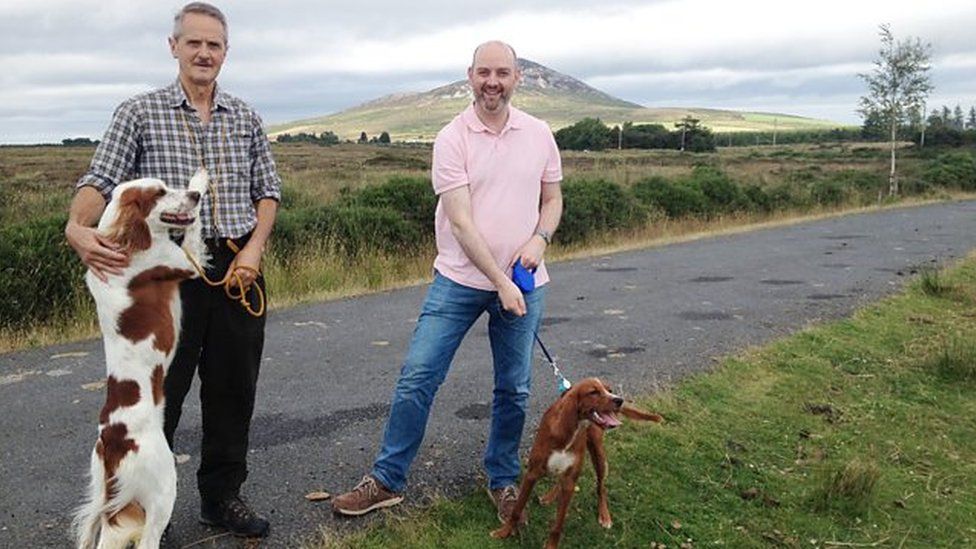The Irish Red and White Setter: A Very Noble Breed
- Published

They date back to the days of the Roman Empire and were once the companion of choice for the Irish landed gentry.
Now the survival of the Irish Red and White Setter is explored in 'A Very Noble Breed' which has been broadcast on Radio Ulster and Radio Foyle.
Classified as a "vulnerable" breed, last year just 64 were registered with the Irish Kennel Club.
And were it not for the post-war determination of an Ulster cleric, the breed could very easily have been lost.
'Jaws of extinction'
One of nine native Irish breeds, Red and White Setter numbers began to dwindle in the late 1800s when the fashion for the now much more recognisable Red Setters became prevalent.
By the time former Army chaplain, the Reverend Noble Houston, returned home from the Great War, so alarmed was he by the dwindling numbers of the Red and Whites, he set about "single-handedly" saving the breed from the "jaws of extinction".
Presenter Dáithí Murray said the minister was "a fascinating character" now widely regarded as the saviour of the breed.
'National psyche'
"In the programme, we spend some time with the congregation of First Presbyterian Church in Ballynahinch, County Down, where he ministered until his death in 1949.
"They explain to us the significance of this very special individual who kept the Irish Setter bloodline going."
A wholly dependable gun dog, highly skilled in sniffing out and pointing to the hiding spots of grouse and game birds, Red and White Setters were granted favour by 18th Century landed gentry who came to see the breed as the working dog of choice.
Over the centuries however, they lost that favour as their Red cousins became increasingly popular - anyone who has taken a bus in the Republic of Ireland will know the place Red Setters have in the national psyche - the breed features on the bus company's logo.
And while both the Red and the Red and White Steers hail from the same canine family, it is the latter that can lay claim to being the original native breed.
Numbers registered with the Kennel Cub have fluctuated over recent years. In 2011 there were 119, but only 64 last year.
An outcross programme involving Red and Whites and Red Setters has recently been approved by the Irish Kennel Club.
Outcrossing involves widening a breed's gene pool to increase genetic diversity and combat complications from inbreeding.
But as Dáithí Murray finds out, that has not been met with universal approval.
In northern Europe the breed is seen as a working dog, he said, while across the Atlantic it is viewed as a show dog.
'A Very Noble Breed' will be repeated on Thursday at 19.30 BST.